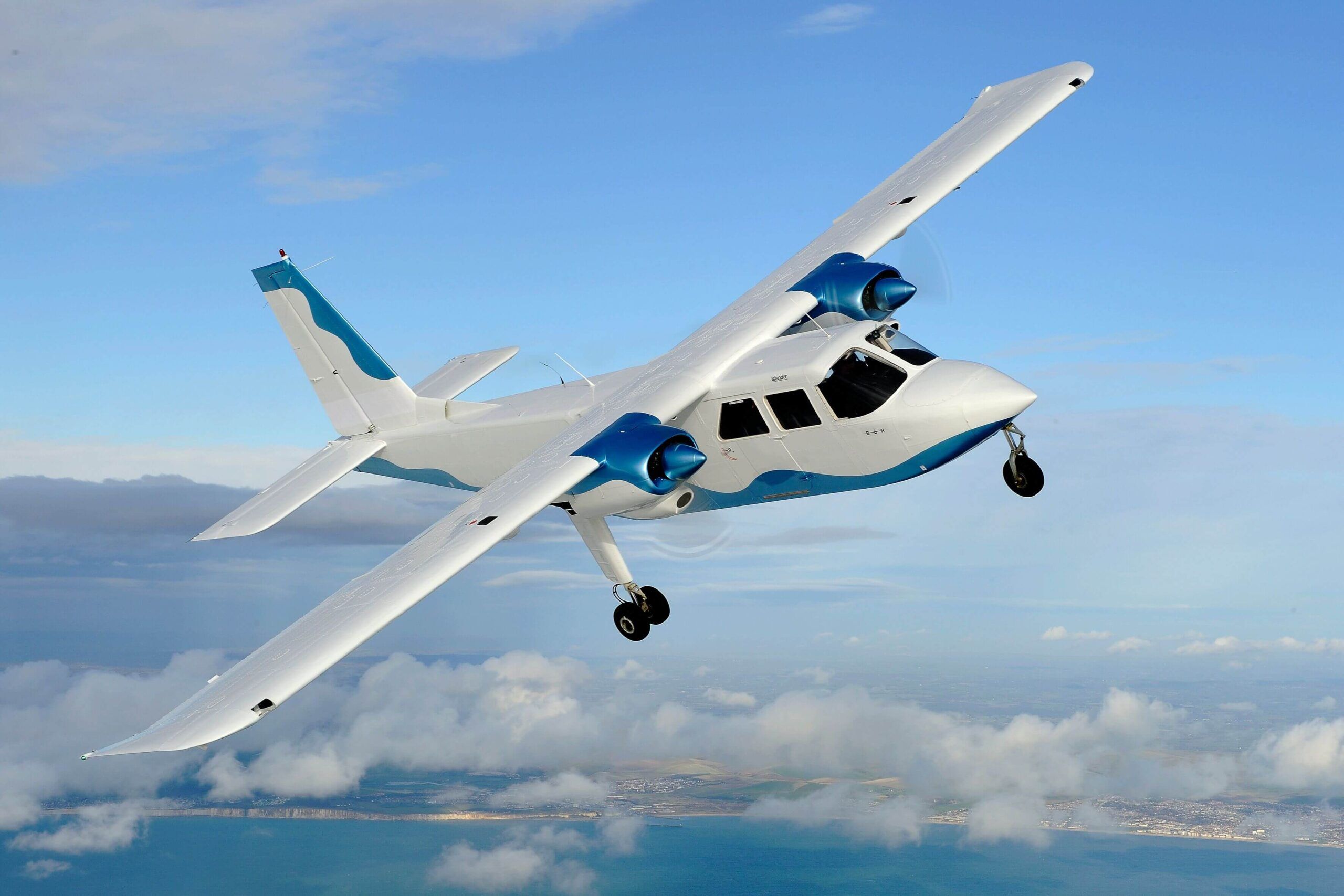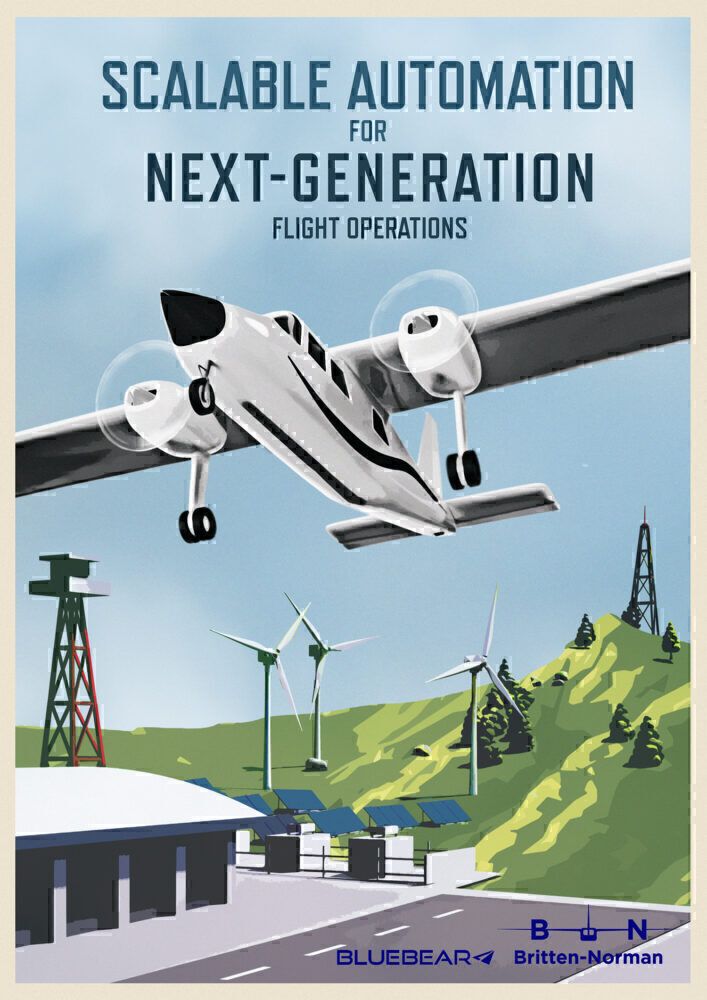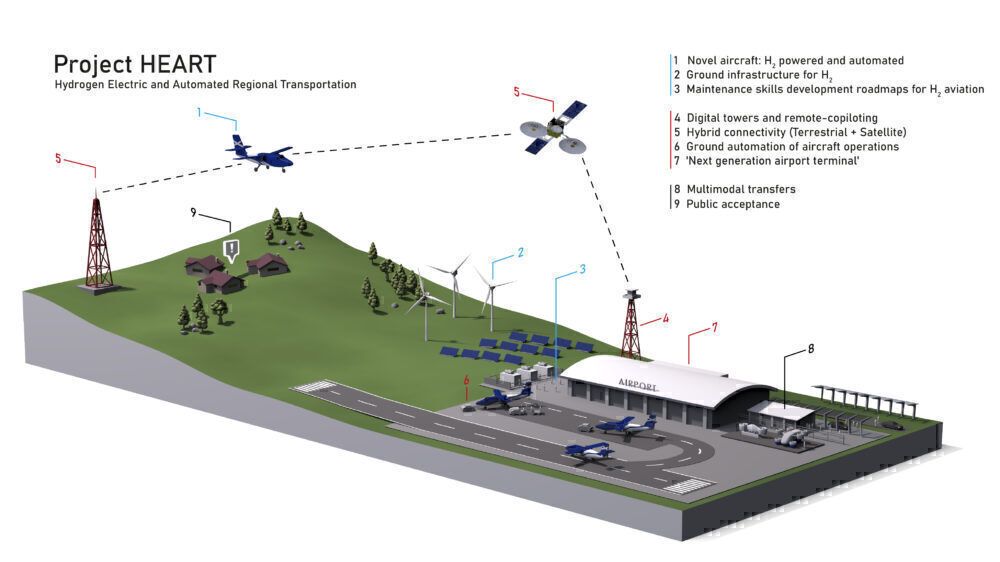Inmarsat has been picked to provide satellite connectivity for the UK’s first-ever zero carbon regional air transport network. The project, called HEART (Hydrogen Electric and Automated Regional Transportation), aims to develop hydrogen-powered, automated and remote piloting solutions for aircraft seating between nine and 19 passengers.
One pilot, zero carbon planes by 2025
The UK government is funding a new project to develop a new type of regional air transport network. Project HEART, standing for Hydrogen Electric and Automated Regional Transportation, could see passengers flying on pilotless, hydrogen-powered aircraft for short regional hops as soon as 2025.
Up to 100 licensed airfields are being made available for the initiative, which targets commuter sized aircraft of around nine to 19 seats. Flights would be for shorter trips of 500 nautical miles or less, and could prove to be a key solution in the fight against climate change.
Existing short hop connectivity is vital to remote locations in the UK, particularly the islands and other rural communities. Currently, providing air transport to these locations is economically unviable, leading to the UK government having to subsidize routes in order to maintain services.
By removing the need for two pilots by making these services autonomous, costs are reduced significantly. Adding hydrogen power into the mix will make these services clean and cheap to operate. The initial vision is to have one pilot in the cockpit, supported by an autonomous co-pilot, although there are plans in place to remove the need for a pilot altogether by 2030.
The UK government is funding the project to the tune of £1.8 million ($2.5 million), and partners so far mooted to be involved include British manufacturer Britten-Norman. It is working with unmanned systems developer Blue Bear Systems to automate its ‘Islander’ aircraft for what could be the UK’s first zero carbon aviation network.
Inmarsat to connect project HEART
In order to facilitate such aviation aspirations, the project needs a great inflight connectivity specialist onboard. This week, Inmarsat announced that it would be pitching into the project, providing a hybrid connectivity soliton that “seamlessly combines its satellite communications with terrestrial networks, enabling remote ‘digital’ co-piloting and journey critical communication in the cockpit.”
Philip Balaam, President of Inmarsat Aviation, commented on the initiative, saying,
“Project HEART represents a greener, smarter and more efficient future for aviation. We are proud to support this important project of the UK Government, utilising our 30 years of experience in satellite communication, navigation and surveillance for both commercial and private aviation, as well as expertise in unmanned vehicle traffic management. Working alongside our extensive network of partners, including Honeywell Aerospace, we are particularly excited about enabling remote operations for aviation networks of the future.”
Project HEART is led by the Department for Business, Energy & Industrial Strategy (BEIS) and is funded by the Industrial Strategy Challenge Fund (ISCF) Future Flight Challenge (FFC). Other innovations under development as part of the project include ZeroAvia’s hydrogen fuel cell powertrains, hydrogen refueling stations from Protium and more. Loganair and the Highland and Island Airports Limited will lead on accommodation of automation and hydrogen-fueled aircraft operations.
This article is brought to you by Simple Flying Connectivity, a new category on Simple Flying dedicated to inflight connectivity. Click here to read all of our inflight connectivity content.




